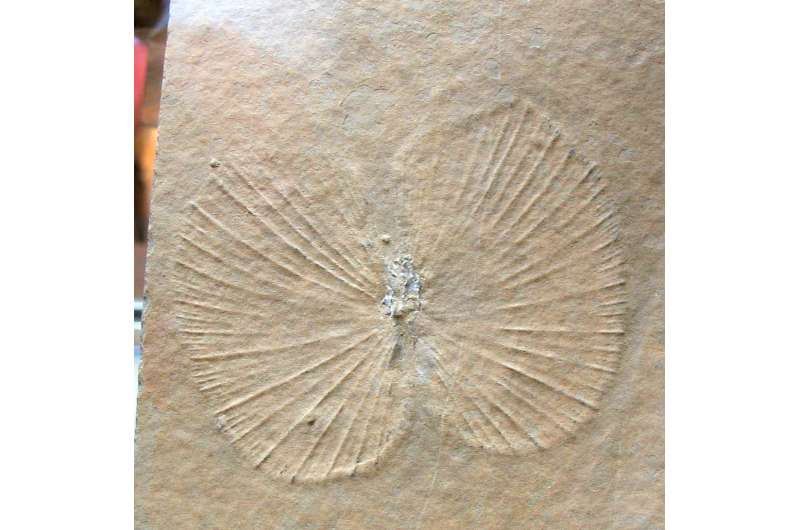October 17, 2018 report
Extinction is forever—and ecosystem recovery takes a really, really long time

Researchers from the University of Leeds studying fossil data surrounding the Permo-Triassic (P-Tr) extinction of 252 million years (Ma) ago found that a marine ecosystem, in comparison with the taxonomic genera that comprise it, took a whole order of magnitude longer to recover after the mass extinction event that defines and separates the two geologic periods. The extinction event was responsible for killing upwards of 90% of all marine animals. These findings, presented in a recent Science Advances article, are especially sobering in light of the ongoing Anthropocene Extinction and the conclusions from the most recent IPCC report.
Haijun Song and colleagues, in an article entitled "Decoupled taxonomic and ecological recoveries from the Permo-Triassic extinction," offer new insights into the circumstances surrounding what was generally held to be a tandem and stepwise recovery, in terms of taxonomic genera and their constituent marine ecosystem, in the Triassic period. The recovery of the ecosystem and its representative taxa was thought to have occurred over several million years, moving from the bottom trophic levels to the top. However, data showing diverse top-trophic-level predators in the early Triassic period seem to contradict this view, along with unexplained gaps in other lower trophic level functional groups. Working from a custom dataset drawn from the Paleobiology Database and published literature, the authors of this study sought to examine the pattern and timing of ecosystem succession in relation to the diversity levels of three groups of fauna: non-motile, motile, and nektonic animals, during the Triassic recovery.
To better understand the nature of the Triassic taxonomic recovery, the researchers examined representative fossil data spanning the Late Permian (254.1 Ma) to the Late Triassic (201.3 Ma) for diversity. In collecting data from a total of 51,055 fossil occurrences (defined as the presence of a genus at a stratigraphic unit or site) they found that marine genera attained pre-extinction levels of diversity about 5 Ma after the extinction event, noting "a logistic increase in taxonomic diversity during the Triassic… and suggesting that generic diversity appears to have reached the environmental carrying capacity."
In studying the ecological recovery as a whole in relation to the separate taxonomic recovery, they examined the separate fates of each of the three functional fossil groups. The non-motile group was composed of stationary animals like corals and sponges; the motile group included crustaceans, gastropods, and infaunal bivalves, among others; and the nektonic group of top-level predators included cephalopods such as octopi, conodonts (now-extinct proto-vertebrates resembling eels), bony fishes, and marine reptiles.
As it turned out, nektonic animals—the group at the highest trophic level—were the first to recover from the P-Tr extinction event in terms of generic diversity, though they declined from their peak in the Middle Triassic well into the last phase of the Late Triassic. Non-motile animals, on the other hand, suffered the worst declines at the beginning of the Triassic, with their diversity decreasing from 500 to 100 genera, though they rebounded and returned to pre-extinction levels by the beginning of the Middle Triassic. The motile group also suffered heavy losses during the extinction event resulting in low diversity before rebounding at the outset of the Middle Triassic.
In terms of occurrence proportion, nekton genera went from ~14% in the late Permian period to peak at 67% 2 Ma later, before declining to 11%. Non-motile genera showed an opposite trend, going from 71% to 21% to finally return to 70% at the end of the Triassic. Motile animals however, remained somewhat constant in proportion after the extinction event and throughout the Triassic. The investigators note a similar, though less pronounced trend, in relation to generic richness for the three groups; they also add that trends for composition and structure hold regardless of paleo-latitudinal region.
Because the proportion of generic diversity of non-motile animals had been stable at 68% throughout much of the preceding Permian period and again approached this level in the Middle and Late Triassic period, the study authors assert that this represents the normal trophic composition of fauna—that is, as the wide base of a pyramid supporting the two higher trophic groups. This pyramid however, is inverted during the Early Triassic period, with nekton dominating the functional pyramid at 52%, and characterizes a disrupted and vulnerable ecosystem with a diminished food web.
Most significantly however, is the finding that taxonomic and ecological recoveries are decoupled. Where taxonomic recovery occurred relatively quickly, as judged by a return to relatively stable global taxonomic diversity, ecosystem recovery is characterized by a much slower "gradual increase in complexity and stability." The study authors contrast the relatively quick, logistic rate of increase in generic richness that signals taxonomic recovery with a logarithmic rate of increase in the proportion of non-nektonic animals that is consistent with an ecological recovery. This ecological recovery was still ongoing after ~50 Ma, whereas taxonomic diversity recovered in about 5 Ma.
These finding show that while this marine ecosystem collapsed in a bottom-to-top manner, its restoration occurred in the reverse order, from top to bottom, where a recovering ecosystem is characterized by an increase in diversity in lower-level consumers, that is, non-nektons. This upends the received stepwise hypothesis that suggests a recovery occurred from the bottom up.
And finally, the researchers conclude "This study reaffirms the importance of protecting global ecosystem diversity because, once it is destroyed, restoration requires dozens of million years, much longer than human history."
More information: Haijun Song et al. Decoupled taxonomic and ecological recoveries from the Permo-Triassic extinction, Science Advances (2018). DOI: 10.1126/sciadv.aat5091
Journal information: Science Advances
© 2018 Phys.org




















